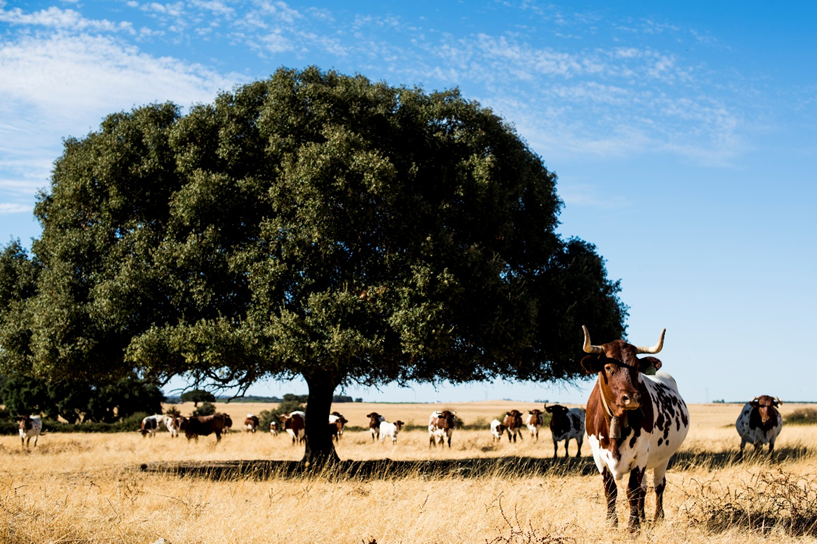Introduction to the challenge addressed
Reproductive management is one of the most important issues to be considered in beef cattle herds. Any female that ends up open (not pregnant) at the end of the year represents additional costs and no income. A practice that suggests a favourable effect on reproductive performance, is to establish a breeding and calving season.
Description of Innovation
Comenda farm, adopts a restriction period of the breeding. The farm is located in the Elvas region of southern Portugal and manages a herd of 150 Mertolenga cows under extensive system. The managing reproduction system is based on the concentration during 90 days the breeding season to consequently concentrate the calving period 90 days in the summer until the end of July-beginning of August. The breeding season starts in October with the use of fixed-time artificial insemination (7-day CO-Synch + CIDR) in the group of cows that calved early, and therefore, the cows best recovered so the FTAI protocol would result cost-effective. The herd is then divided into groups of 25 to 30 cows and a bull is kept in each group until the end of the breeding season.

Figure 1 - Total calves born per month in 2020 at Comenda farm
In 2020, the calving distribution, as we can see in figure 1, did not happen in the 90-day interval as desired, because new cows that came pregnant and gave birth outside the defined interval were introduced in the farm.

Figure 2 - Total calves born per month in 2021 at Comenda farm until mid-October
In 2021, the first delivery was on August 1st. During the breeding season, one of the bulls had a lameness problem, it had to be replaced, which delayed the end of the calving season. This year, the calving season will end in November, that is, it will also exceed 90 days.
Impact on farm performance
The adoption of this practice significantly improved production efficiency due to the following:
- Improvement in the reproductive management of the herd. Sub-fertile or infertile cows are more easily identified, and selection for fertility is more effective.
- Better calf management (identification, vaccination, weaning).
- Better management of time and labour.
- Early calving cows usually wean heavier calves.
Audio-visual material

Farmer comment (for Good Practices)
The adoption of this good practice allowed routine management actions to be easier to program and execute such as pregnancy diagnosis, calving observation, identification of calves, weighing and weaning. This has been beneficial to the income of the farm, due to the increase in the number of calves per cow per year.
The main difficulty in implementing the breeding season was to provide facilities to house the herd bulls for the off-season.
Further information
- Ontario – Ministry of Agriculture, Food and Rural Affairs
Beef Breeding Season Management
http://www.omafra.gov.on.ca/english/livestock/beef/facts/85-054.htm#LENGTH
- The importance of having a breeding season
- Managing and Measuring Reproduction in the Beef Cow Herd
Alabama Cooperative Extension System – Alabama A & M University
- Starting and Managing a Defined Calving Season
University of Tennessee Extension Institute of Agriculture
https://utbeef.tennessee.edu/wp-content/uploads/sites/127/2020/11/SP778.pdf
- Transitioning Beef Cattle to a Defined Breeding and Calving Season
Virginia Cooperative Extension – Virginia State University
https://vtechworks.lib.vt.edu/bitstream/handle/10919/84369/APSC-145.pdf?sequence=1